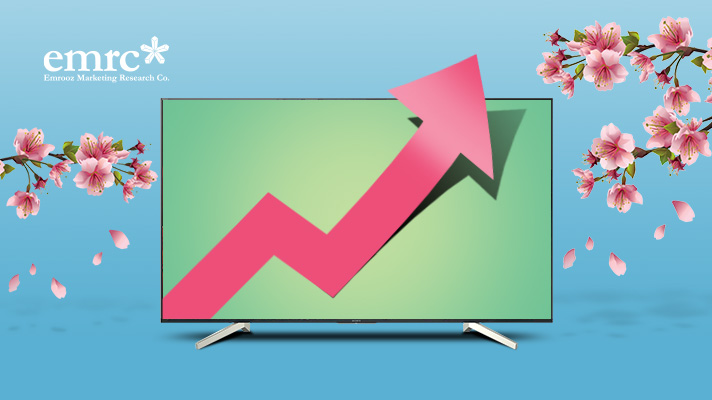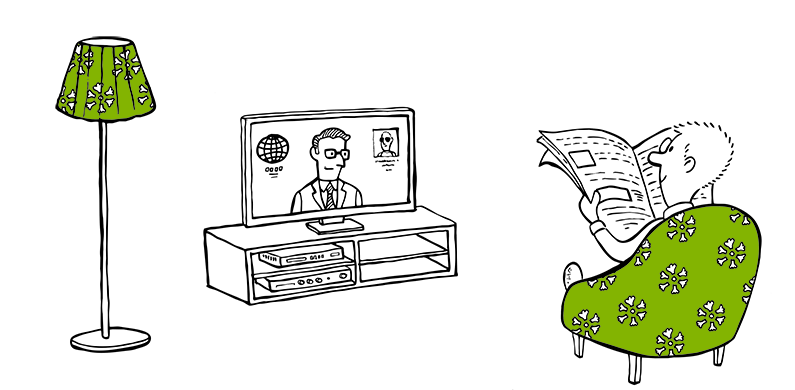
TV Advertising 63% Increase in Spring 2019
According to a survey conducted by Emrooz Market Research Company (EMRC) in the first three months of the current year 1398 (March – May 2019), the total number of TV ads was 126,086 with a total time period of 5,761,559 seconds. According to the study 39% of the number of ads and 40% of the total time of the advertisements in the spring season was in the month of Ordibehesht (April/ May). Also, the average daily number of ads in this month was 1600 with an average time period of 46 seconds for each ad. In addition, the number of spring ads this year increased by 76% in number, 194% in advertising time and 63% in the costs compared to the last year. Read the full text of this report on the dnaunion website.
In the first three months of the current year, there were many speculations about the changing trend of television advertisement and cooperation of some brands with the General Directorate of Commerce of the IRIB. These speculations were mostly due to the change in the style and repetition of some television ads. The Emrooz Marketing Research Company (EMRC) in a research has dealt with the trend of television advertisement in the first three months of the year (spring). In the aforementioned research, a comparison has been made between the volume of spring television advertising in the spring season of 1398 with the corresponding period last year. The following is the data obtained from the said research.
TV Commercials in Spring 2019
The first three months of the current Persian year coincided with the fasting month of Ramadan: A month in which many brands try to have an active presence. Such an event has led to significant changes in television advertising this year compared to the same period last year. In the first three months of this year, that is to say the spring time of 2019, the total number of TV ads was 126,086 with a total time of 5,761,559 seconds. According to the surveys conducted, 39% of the total ad and 40% of the time period of the spring ads were conducted in the month of Ordibehesht (April/May). Also, the average daily number of ads in this month was 1600 with an average time limit of 46 seconds for each ad.
Now, comparing this year’s data with that of the same period last year, it should be noted that the amount of spring advertisement in 2019 increased by 76% in number, 194% in the time of advertisement and 63% in costs as compared to the previous year.
Channel-Based Advertisement
Television channels are also competing closely with each other for more ads. The competition has changed year by year, and the ranking of the channels in ad broadcast this year is also different as compared to the same period last year. In the spring of 2019, the iFilm movie channel with 15% of the total volume of the advertisement has had the largest share of advertising activity in terms of number while in the spring of the preceding year, 2018 the iFilm stood in the fifth place in terms of advertising activity among other channelss. The channel has increased its activity by 2.14 times as compared to the previous year.
Also, in the spring 2018, Channel 3 wih 21% of the total volume of advertisements stood on the top of the list and with a share of 45% accounted for the largest share of the costs, while in the spring 2019, the share of the total cost of the advertisement on Channel 3 shows a 7% decline, and according to the costs calculated by the IRIB tariffs, the cost of the Channel 3 advertisement in the spring 2019 increased by 37% as compared with the previous year.
Highest Growth in Number of Ads
The number of ads of various channels has also changed significantly in the first three months of the current year. In the spring 2019, Channel 6 and Channel 4, with a growth of 3.6 and 3.3 in number of ads respectively, had the highest increase in the number of ads as compared to the preceding year. Channel 4, with a growth of 715% in its advertising time, had the highest difference as compared to the last year.
Also, according to the survey, in the spring 2019 Channels 6 and 4 with a growth rate of 3.6 and 3.3 respectively in the number of advertisements registered the highest growth rate in the number of advertisements as compared to the previous year.
Therefore, it can be said that Channel 4 with a growth rate of 715% in the advertisement time had the highest difference among the channels as compared to the previous year. Also, Namayesh Channel registered the highest amount of difference in advertising costs among the channels as compared to the spring 2018 and with 109 times more increase in the number of advertisements, its advertisement costs increased by 4.3 times as compared to the previous year, 2018.
Product Group-Based Advertisements
The top 10 heavily advertised products in the first three months of the current year were milk, maize, hair care products, footwear, canned tuna, washing liquid, valves, carpet store, biscuit and wafer, and chain stores.
It should be noted that in the spring 2019, the food and beverage product group accounted for 43% of the TV advertisements. The largest number of advertisements belonged to the Alis brand milk product, with a total of 10,585 ads and a share of 8.4% of the total number of ads. This product has used the advertisement badge in 71% of its advertisements. Now, comparing these numbers with the previous year data, shows that in spring 2018 the highest number of ads was for the product group of services with 21% of the advertisement volume and app product with 14% had the highest number of ads, of which 99% belonged to the Rubica brand which used the advertisement badge in 88% of its advertisements.
Overall, the information obtained in the study indicated significant changes in television advertising: Changes that their effectiveness needs to be measured and presented. After the announcement of the result of the effectiveness of the brands, it can be judged whether or not their promotional action is effective or not.






